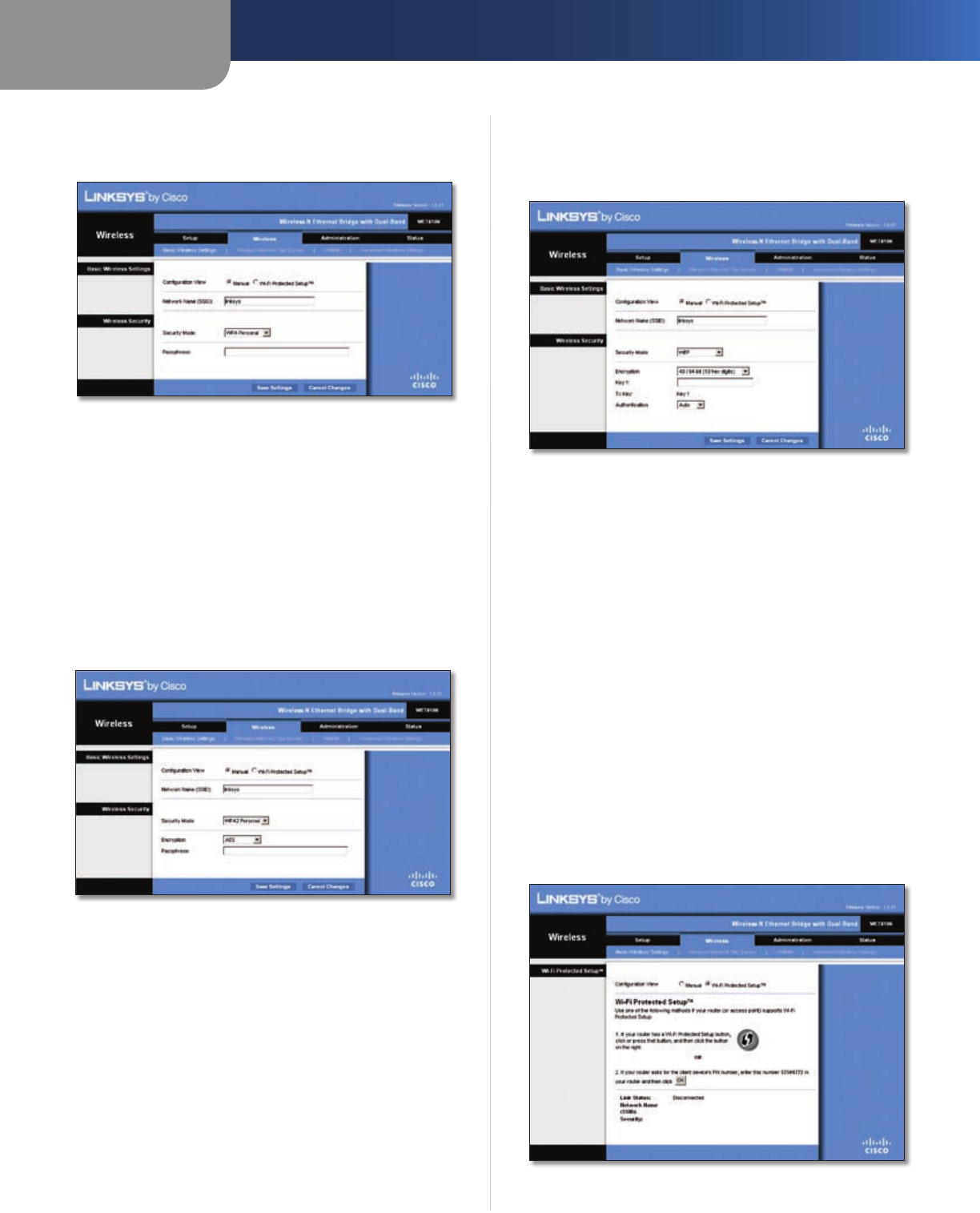
Chapter 3
Advanced Configuration
5
Wireless-N Ethernet Bridge with Dual-Band
WPA Personal
WPA is a security standard stronger than WEP encryption.
Security Mode > WPA Personal
Encryption WPA supports the TKIP encryption method,
with dynamic encryption keys.
Passphrase Enter the key shared by the Bridge and
your wireless router or access point. It must have 8-63
characters.
Click Save Settings to apply your changes, or click Cancel
Changes to cancel your changes.
WPA2 Personal
WPA2 is a more advanced, more secure version of WPA.
Security Mode > WPA2 Personal
Encryption WPA2 supports two encryption methods,
TKIP and AES, with dynamic encryption keys. Select the
encryption method, AES or TKIP or AES. The default
selection is AES.
Passphrase Enter the key shared by the Bridge and
wireless router or access point. It must have 8-63
characters.
Click Save Settings to apply your changes, or click Cancel
Changes to cancel your changes.
WEP
WEP is a basic encryption method, which is not as secure
as WPA or WPA2.
Security Mode > WEP
Encryption Select a level of WEP encryption, 40/64 bits
(10 hex digits) or 104/128 bits (26 hex digits). The
default is 40/64 bits (10 hex digits).
Key 1 Enter the WEP key of your network.
Tx Key Key 1 is the transmit key used by the Bridge.
Authentication The default is Auto, which allows either
Open system or Shared key authentication to be used.
Select Open to use open system authentication; the sender
and recipient do not use a WEP key for authentication.
Select Shared to use shared key authentication; the
sender and recipient use a WEP key for authentication.
Click Save Settings to apply your changes, or click Cancel
Changes to cancel your changes.
Wi-Fi Protected Setup
There are two methods available. Use the method that
applies to the router you are using.
Wireless > Basic Wireless Settings (Wi-Fi Protected Setup)
